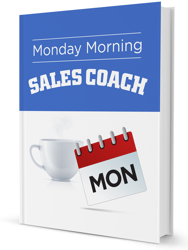Marketing v. Selling
Most salespeople have their “Top 10 Prospect List” – important companies in their territory that could generate significant sales revenue for the company. These companies are usually difficult to get an audience with, especially if you have had little or no prior contact with them. After all, they may not know who you are, and if they do, you have little credibility with them. When you’re having difficulty getting an appointment, you’ll have a tendency to get frustrated and abandon the prospect for greener pastures.
7 Touches
Research indicates that when trying to establish a business relationship from scratch, most prospects need to be “touched” (exposures to the selling company by phone, advertising, etc.) between 7 and 15 times before enough credibility has been established so that the prospect is willing to give the salesperson an appointment.
Further, studies show that most salespeople give up after about 3 attempts to make an appointment. The area between the third and seventh attempts is called the Lost Opportunity Zone (and it’s extensive).
So when a key “suspect” in your territory gives you the cold shoulder, stop trying to “sell” them, and start “marketing” to them. They need to be removed from your “sales funnel” and moved to your “marketing funnel.” Credibility must be established before they decide that it would be worthwhile to give you some of their time.
There’s a big difference between selling and marketing.
- Selling is a short-term strategy designed to position you as the solution provider of choice for an opportunity that exists now.
- Marketing is a long-term process designed to build credibility and position you as a potential vendor partner for future business opportunities.
Trying to sell the prospect when he is perfectly satisfied with his current vendor, when pain (or fear of future pain) is non-existent, is a weak business strategy that pays very poor dividends on your time and may alienate your prospect.
You should adopt a strategy of staying in touch without each contact being interpreted as an attempt to sell them something. Provide them something of value, use a mailing campaign, try to meet them at industry events, invite them to events you are sponsoring, etc.
Get creative, be persistent, but don’t be a pest.
Self-Study Assignment: Make a list of some ways you can stay in touch with your key prospects without being considered a pest. See how many unique things you can come up with and create your own 7 Touch Marketing Campaign around your ideas. Then execute!


